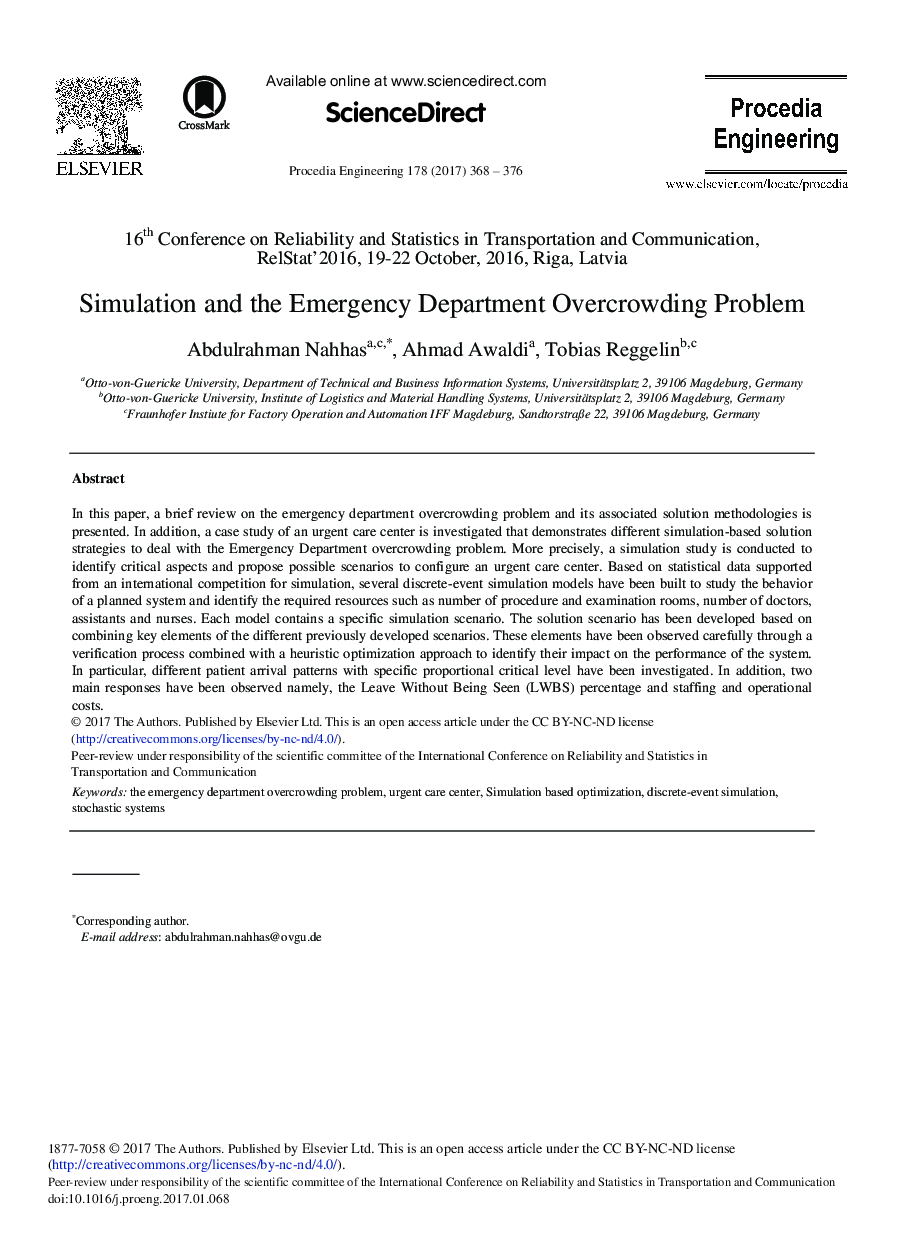| Article ID | Journal | Published Year | Pages | File Type |
|---|---|---|---|---|
| 5028153 | Procedia Engineering | 2017 | 9 Pages |
Abstract
In this paper, a brief review on the emergency department overcrowding problem and its associated solution methodologies is presented. In addition, a case study of an urgent care center is investigated that demonstrates different simulation-based solution strategies to deal with the Emergency Department overcrowding problem. More precisely, a simulation study is conducted to identify critical aspects and propose possible scenarios to configure an urgent care center. Based on statistical data supported from an international competition for simulation, several discrete-event simulation models have been built to study the behavior of a planned system and identify the required resources such as number of procedure and examination rooms, number of doctors, assistants and nurses. Each model contains a specific simulation scenario. The solution scenario has been developed based on combining key elements of the different previously developed scenarios. These elements have been observed carefully through a verification process combined with a heuristic optimization approach to identify their impact on the performance of the system. In particular, different patient arrival patterns with specific proportional critical level have been investigated. In addition, two main responses have been observed namely, the Leave Without Being Seen (LWBS) percentage and staffing and operational costs.
Related Topics
Physical Sciences and Engineering
Engineering
Engineering (General)
Authors
Abdulrahman Nahhas, Ahmad Awaldi, Tobias Reggelin,
